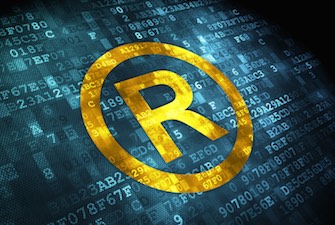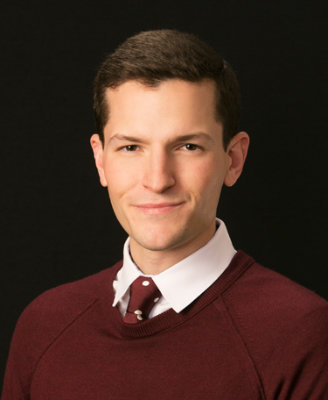 In its 2013 Consumer Electronics Show event, mobile chip-making giant Qualcomm managed to involve Maroon 5, the Archbishop Desmond Tutu and Big Bird in what The Verge described as an “insane” and “surreal” keynote and product demonstration. Gltizy product launches have become de rigueur for technology companies in particular, generating substantial fanfare, affecting company shares, and temporarily transfixing the tech blogosphere with predications, speculations, and wild guesses about what’s in the pipeline for some of the world’s most visible companies. Thought-leaders instruct companies on how to “launch like Steve Jobs” and sidestep an “awkward celebrity product launch.”
In its 2013 Consumer Electronics Show event, mobile chip-making giant Qualcomm managed to involve Maroon 5, the Archbishop Desmond Tutu and Big Bird in what The Verge described as an “insane” and “surreal” keynote and product demonstration. Gltizy product launches have become de rigueur for technology companies in particular, generating substantial fanfare, affecting company shares, and temporarily transfixing the tech blogosphere with predications, speculations, and wild guesses about what’s in the pipeline for some of the world’s most visible companies. Thought-leaders instruct companies on how to “launch like Steve Jobs” and sidestep an “awkward celebrity product launch.”
Among the most promising tech tea leaves product launch predictors rely on are publicly available applications and registrations for intellectual property. Just last week, for example, the International Business Times reported that Apple filed a patent application for a wearable computing ring that they’ve dubbed the “Apple Ring.” The application “reveals a device that would take … touchscreen computing from the wrist to the finger” and speculation has already begun about “when [Apple] plans to bring an Apple Ring to market.”
Given the importance of product launches and the proliferation of speculation surrounding them, many of the world’s highest profile companies – particularly tech darlings like Apple – have sought ways to balance IP protection, its corresponding public disclosure requirements, and their desires to keep new products “secret” before they are formally announced.
The result has been a growing trend of U.S.-based companies relying on earlier foreign trademark applications as the basis for later U.S. applications, a process that is provided for under the Trademark Act. Specifically, §44(d) of the Act provides that applicants who file trademark applications in qualified foreign countries shall haven their trademark applications “accorded the same force and affect as would be accorded the same application if filed in the United States on the same date on which the application was first filed in [the] foreign country.” One important caveat to the rule is its requirement that applicants file their U.S. applications within six months of filing their earlier foreign application. §44(d) in this way acts as one of the five recognized filing or registration bases that applicants can make use of at the Patent and Trademark Office, the others being use in U.S. commerce (a “1(a) filing”), a bona fide intent to use in the U.S. (a “1(b) filing”), foreign registration (a “44(e) filing”), or extension of a pre-existing international registration by way of WIPO and the Madrid Protocol (a “66(a) filing”). By using 44(d), U.S.-based companies with < 6 month old trademark applications in foreign countries that adhere to the Paris Convention receive filing “priority” in the U.S. based on those foreign applications. More detailed requirements for establishing entitlement under a treaty are outlined in the Trademark Manual of Examining Procedure §1002.03.
Why file in some foreign countries as opposed to others, though? The likely answer is that unlike the U.S., a number of foreign countries do not have publicly accessible online databases that track companies’ trademark applications. Examples include Trinidad and Tobago and Jamaica for various filings. Applicants filing in Trinidad and Tobago benefit from an online search feature that nevertheless lacks a great deal of identifying information; Jamaica provides no official online trademark database at all.
Apples, however, goes one step further to ensure a bit of application privacy, purportedly creating a series of shell companies to carry out its various filings, many of which tend to be Delaware corporations based in the Corporation Trust Center, a single-story office building that is home to the registered agents of over 6,500 corporations and where more than 200,000 businesses hold addresses.
As much as leveraging §44(d) may throw speculators off companies’ trails, however, international filings and shell corporations alone may no longer be as effective as they once were at ensuring a degree of short-lived trademark privacy. On October 1, for example, the tip and review blog Apple Insider reported on rumors that Apple was developing wireless headphones. The blog based its hunch on “international trademark applications for an ‘AIRPODS’ audio accessory, filed by what appears to be a shell company.” That company, Delaware-based Entertainment in Flight, LLC, currently has the following trademark registration application pending.
Other blogs such as Macrumors have reported that although it may not be possible at this point to tell whether Apple itself is directly linked to the applications, that the purported shell company’s application follows “a strategy Apple has used a number of times in the past to hide its trademark work,” noting that “[t]he company was created in early September and appears to have no visible operations other than last week’s trademark filing.”
Circumstantial evidence also exists to support the conclusion that Entertainment in Flight is just a shell corporation used to throw product speculators off Apple’s trail. Specifically, the application cites to an earlier March trademark filing in Jamaica as a priority date for the registration. According to Macrumors, “Apple commonly files first in Jamaica to establish its claim on a trademark, as the country does not maintain an online trademark database, making it easier for Apple and other companies to hide such filings.” The blog went on to note that “known Apple-associated law firms” made the international trademark filings, further suggesting a connection,
The blogs’ comments underscore a growing – and global – cat-and-mouse game between consumers, technology companies, and the trademark lawyers who represent them. Whether the trend of prominent companies and their lawyers making use of international filings and shell corporations continues seems beyond doubt. Whether those strategies alone will be sufficient to keep unreleased products from generating attention and speculation, however, remains to be seen.

![[IPWatchdog Logo]](https://ipwatchdog.com/wp-content/themes/IPWatchdog%20-%202023/assets/images/temp/logo-small@2x.png)

![[Advertisement]](https://ipwatchdog.com/wp-content/uploads/2024/04/Patent-Litigation-Masters-2024-sidebar-early-bird-ends-Apr-21-last-chance-700x500-1.jpg)

![[Advertisement]](https://ipwatchdog.com/wp-content/uploads/2021/12/WEBINAR-336-x-280-px.png)
![[Advertisement]](https://ipwatchdog.com/wp-content/uploads/2021/12/2021-Patent-Practice-on-Demand-recorded-Feb-2021-336-x-280.jpg)
![[Advertisement]](https://ipwatchdog.com/wp-content/uploads/2021/12/Ad-4-The-Invent-Patent-System™.png)







Join the Discussion
No comments yet.